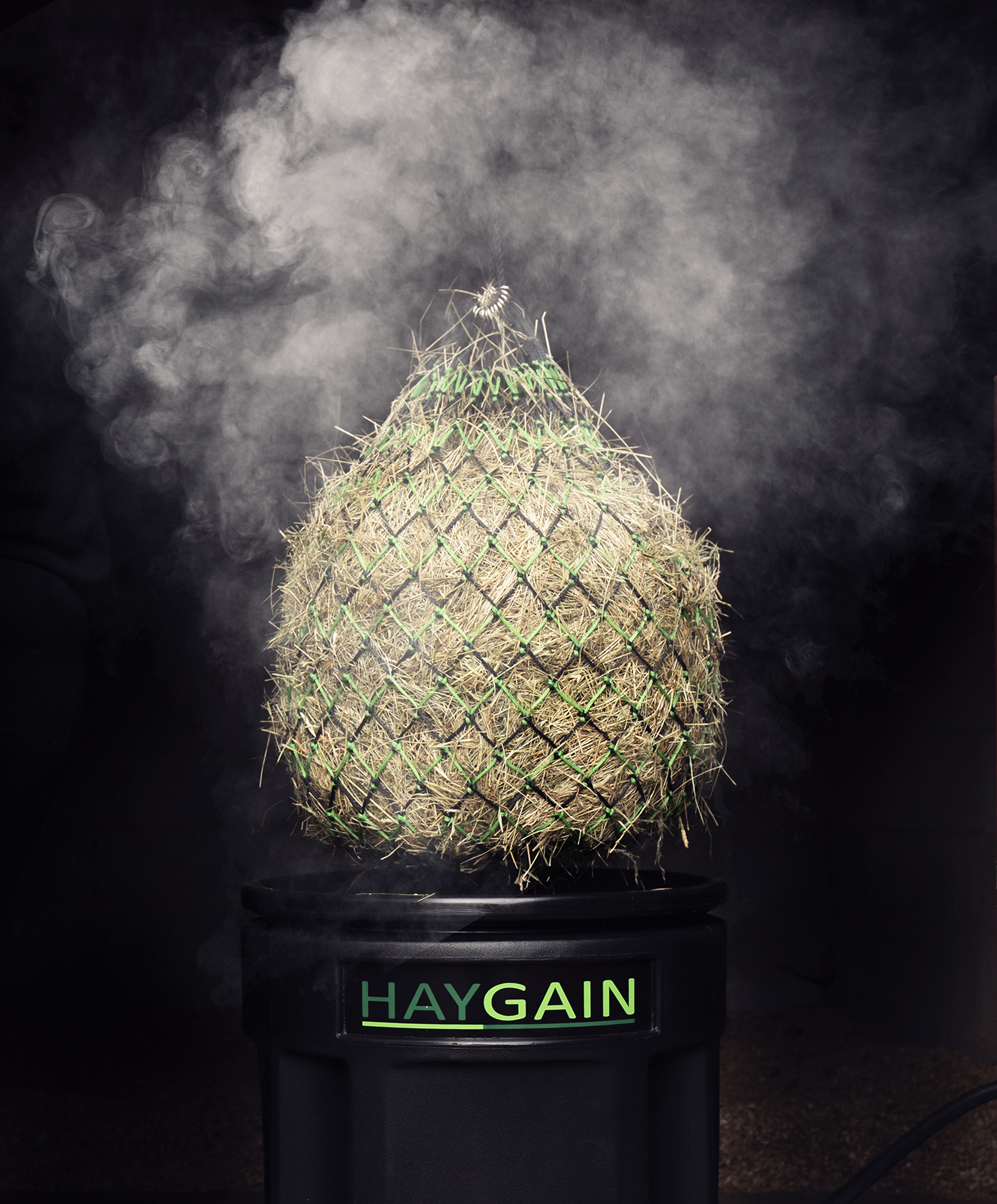Promotional Feature with Haygain UK
To steam or soak your hay – it’s a question some horse owners still puzzle over.
But luckily, there’s a scientifically-backed answer to the question of what is best for your horse. Hay steaming with a Haygain steamer is not only shown to be a healthier option for your horse, but it also makes life easier for you. That’s a double bonus.
Why is hay steaming healthier for horses?
It’s common knowledge that dry hay and its dust has a negative effect on a horse’s respiratory system. The traditional solution is to soak hay in water before feeding, but while this does reduce airborne dust particles, it actually creates other problems.
Studies have shown that bacteria and mould can grow in soaked hay at shockingly fast rates: increasing by 150% in only 10 minutes, and continuing to multiply even while a horse is eating it.
Another study compared hay that had been soaked for various periods of time, with hay that had been steamed in a Haygain high temperature steamer. They found that steaming decreased the levels of bacteria, mould and yeast, and these levels did not increase again, even after three days after steaming. In comparison, the amount of bacteria and yeast in the hay increased after soaking, with more detected in the hay that had been soaked for longer.
As well as preventing the growth of bacteria in hay, steaming has also been shown to preserve the nutritional value of hay to a far greater extent than soaking. The same study concluded that while steaming did not negatively impact the nutrients of the hay, with the exception of sugars – steaming decreases sugars to small, varying degrees. Conversely, soaking was shown to leach several nutrients.
The recommended method to significantly reduce the sugars in hay, if required, is a nine-hour soak, followed by Haygain steaming.
Haygain: the scientifically-backed steaming option
The development of Haygain steamers has been surrounded by growing scientific evidence out there, showing the benefits of steaming hay for horses.
Haygain is a patented system and the only method proven to reduce respirable particles in hay. Results showed Haygain steaming reduces airborne respirable particles and microbial contamination by 99%, without compromising nutritional quality.
Plus, horses have been shown to prefer the taste of Haygain steamed hay. A study observed what happened when a group of stabled horses were offered dry hay, haylage and Haygain steamed hay. The steamed hay was most commonly chosen first, and the horses consumed more of it than the other options during a one-hour period.
Haygain steamed hay also contains up to three times as much moisture as dry hay, which aids horses’ digestion and hydration.

What are the other benefits of hay steaming?
Steaming hay using a Haygain steamer has a whole range of plus points for anybody caring for horses.
Soaking hay has to be one of the most unpleasant of all yard tasks, especially in winter when it inevitably ends up becoming a cold, wet and messy job. A Haygain steamer achieves a healthier result for your horse, with less effort required from you.
Using a Haygain steamer is also a much better option than soaking when it comes to the environment, and we all know how important it is to do everything we can to protect the world around us.
This is because hay steaming uses a lot less water than soaking, as it’s the process of steaming that removes dust and toxins, not the water itself. It’s no small difference, either: soaking hay typically requires 60-100l of water, compared to the 4l needed by a Haygain steamer.
So when it comes to weighing up whether to soak or steam your horse’s hay, let yourself be led by the science, just as Haygain is.
Research references
Moore-Colyer, M.J.S. & Fillery, B.G. (2012). The effect of three different treatments on the respirable particle content, total viable count and mould concentrations in hay for horses.
Wyss, U. & Pradervand, N. (2016). Steaming or Soaking.
Stockdale, C and Moore-Colyer, M.J.S. (2010). Steaming hay for horses: The effect of three different treatments on the respirable particle numbers in hay treated in the Haygain steamer.
Moore-Colyer, M.J.S., Taylor, J. & James, R. (2016). The effect of steaming and soaking on the respirable particle, bacteria, mould and nutrient content in hay for horses.
Brown, E., Tracey, S and Gowers, I. (2013). An investigation to determine the palatability of steamed hay, 14 dry hay and haylage.




